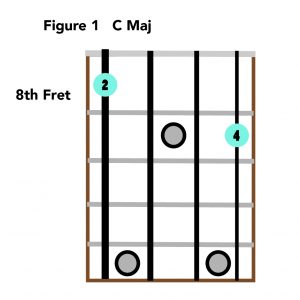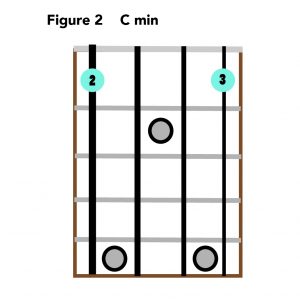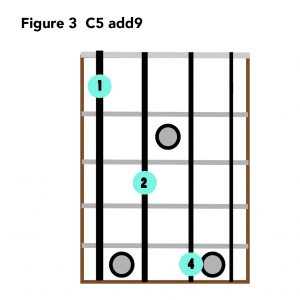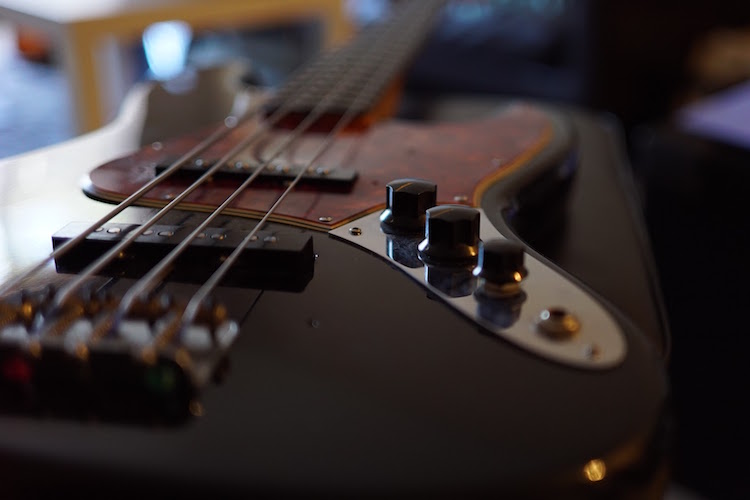While playing chords on a bass is nothing new, the practice has long been considered a little taboo. But now that players like Thundercat are making chordal playing more prominent, it may be time for you to get your chord chops in shape.
In this article I’m going to outline some of my favorite voicings on the four-string and talk about where you may want to try using them.
Double Stop
First up is the humble double stop, which is basically any two-note chord. Some monster Motown players have employed the use of these, and from time to time you’ll hear players like Pino Palladino tastefully drop them in. My all time favorite voicings from this group use the root and the 3rd, but bumping the 3rd up an octave to create what is really an interval of a tenth. So using everyones favorite root, C, a double stop on a C major chord would look like this:

And this for C minor.

I like this particular fingering for these chords, as it frees up my first and third fingers (with the major chord… first and fourth with the minor chord) to play some additional notes or embellishments, while the second and fourth fingers grab the chord. Try hammering on from the 9th to the 10th using your first and fourth fingers while the second finger plays the root to see what I mean.
Of course, you can use these in smaller intervals, like from the root to the 3rd, but if you do I would think about playing them higher up on the neck to avoid muddiness. The beauty of the 10th voicing is that the bottom is not lost, while you add the higher harmony.
For most chords, I try to keep the lower register stuff in wider intervals. For example, in all of the voicings in this article, the smallest interval between the lowest two notes is a fifth.
Adding Tensions
The next figure represents a shape I use often, as it keeps things harmonically ambiguous and has a wide sound. This is a C5add9 — a power chord with the 9th. By voicing it C, G, D we get stacked fifths and a very airy sound that won’t clash with the other instruments. Because of the absence of a 3rd it can work on major, minor, sus, and dominant seventh chords.

Deep Chords
Lastly, the voicing that got me way deeper into chordal playing. Figure 4 is a Cmin9 in a piano-like cluster, à la Bill Evans (check out how he voices the Fmin9 at measure 3 of this piece). I first heard this on bass via Matt Garrison, a player worth checking out if you want to study a more chordal approach or if you just want to see some jaw-dropping playing. This one is a bit of a stretch, so it will take some work to get comfortable on the fretboard. I love this specific voicing because it combines the openness of stacked fifths with the tension of the minor 9 interval between the E♭ on the G string and the D on the D string. With all the harmonic information in this voicing, you’re going to want to be very picky when using it. Things can get pretty cluttered and muddy when the bass is playing the root, 5th, 9th, and 3rd.

Figure 5 is the same type of voicing, but with the 3rd moved up to make it a CMaj9.

There are, of course a ton of other chords out there, which I encourage you to find and experiment with on your own, in order to help shape your personal approach to chordal playing. Try including harmonics and fretted notes, or play some melodic content while holding down a chord. Above all, make it your own.




